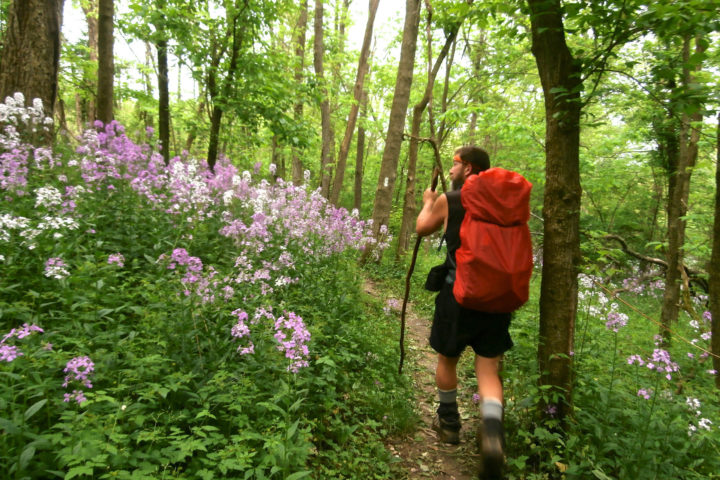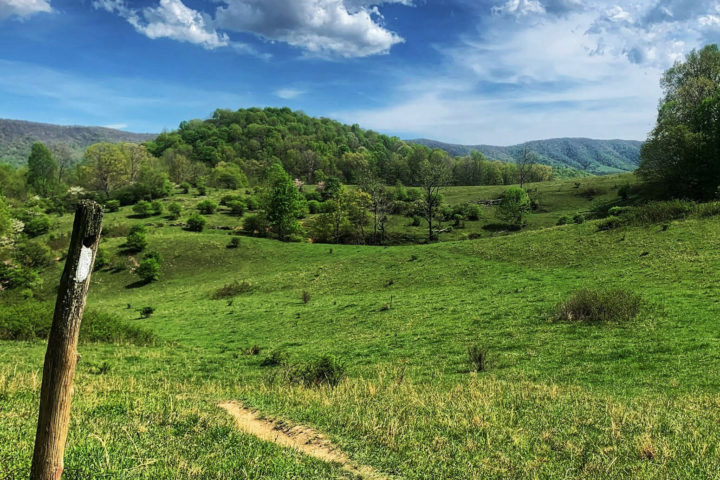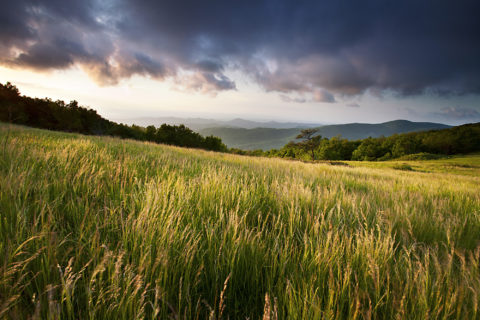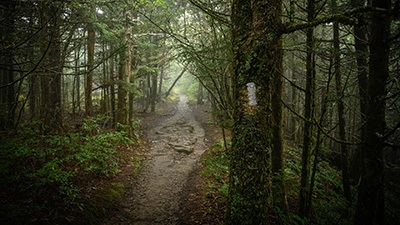And Why They're Not So Spooky
Bats of the Appalachian Trail
October 31, 2023
Bats are often associated with spooky imagery and Halloween, but did you know that bats are not blind, bloodthirsty, or scary? The truth is that bats play a vital role in Appalachian Trail (A.T.) ecosystems. The A.T. landscape offers critical habitat for various bat species, like overwintering caves and summer roosting sites in cavity trees. Trail visitors can often spot bats in the summer months, especially at dusk near open area edges, where bats frequently forage for insects.
Bats are integral to ecosystems (and people) as they are voracious insect-eaters, consuming approximately one-third of their body weight in insects every night. However, many of the A.T.’s bats are facing a dire threat, which puts ecosystems in jeopardy. This blog features common bat species found in Virginia, the state with the most miles of Trail, and highlights the significance of bats and the challenges they face.
Virginia’s Bats and Bat Habitats
Virginia, a state known for its diverse natural landscapes and 538.1 miles of the A.T., is home to various bat species. These misunderstood mammals are distributed throughout the state, with hibernacula (winter roosts) being most common on the west side of the Blue Ridge in karst topography like sinkholes and caves. During the summer months, bats can be found in a variety of roosts, including tree cavities and peeling bark.

Clusters of Virginia big-eared bats (Corynorhinus townsendii virginianus). Photo by Dave Riggs.
Virginia is home to 17 native bat species, with four of them listed by the U.S. Fish and Wildlife Service (USFWS) under the Endangered Species Act. Notably, the Indiana bat, northern long-eared Bat, and the Virginia big-eared bat are among these listed species. The Virginia big-eared bat holds the honor of being the state bat of Virginia, one of the few states with such an official designation. Unfortunately, the population of these unique bats is in dramatic decline, with only 10,000 individuals remaining nationwide.
The Threat of White-Nose Syndrome
One of the most pressing challenges for bat populations along the Trail is white-nose syndrome (WNS). This devastating disease has a mortality rate of over 90%, primarily affecting bats during their hibernation in winter roosts. WNS awakens hibernating bats prematurely, causing them to lose energy stores and, ultimately, starve.
To combat this deadly disease, the U.S. Forest Service has taken strategic measures to protect bat populations by closing hundreds of caves. Humans are often the unwitting carriers of WNS, picking it up in one cave and inadvertently spreading it to another, making these closures essential for bat conservation.
Not So Spooky
While bats may be associated with Halloween spookiness, it’s essential to remember that these creatures are integral to the health of the A.T. ecosystems. They are natural pest controllers, helping to regulate insect populations and supporting the overall balance of the environment. The decline in bat populations is a concerning trend, and it’s our responsibility to protect bats and their habitats.

Little brown bat by Ann Froschauer, courtesy of USFWS.
To learn more about Virginia’s bats and their conservation, you can visit the Virginia Department of Wildlife Resources (DWR) website.
As you hike along the Appalachian Trail and enjoy the scenery, take a moment to appreciate the vital role that bats play as they dip and weave through the twilight sky.
Discover More

Official Blog
Five Common Invasive Species Along the A.T. (and How You Can Help)
A wide variety of invasive species have taken root on the Appalachian Trail, but that doesn’t mean we have to sit back and let them do their dirty work.

Learn More
Bears on the A.T.
Black bears inhabit almost all parts of the Appalachian Trail corridor. Learn more about how you (and the bears) can stay safe during your hikes.

Plan Your Visit
Explore by State
Learn more about each of the 14 states the Appalachian Trail passes through, from cool facts to essential information for your next hiking trip.





